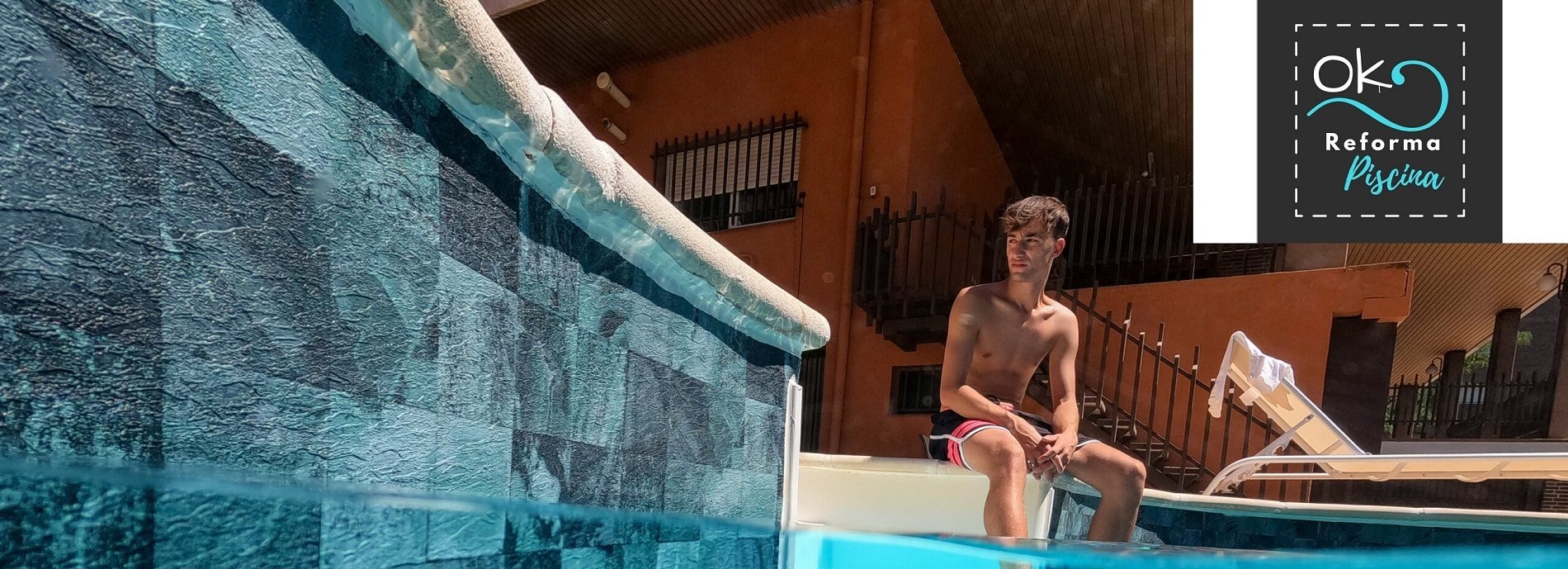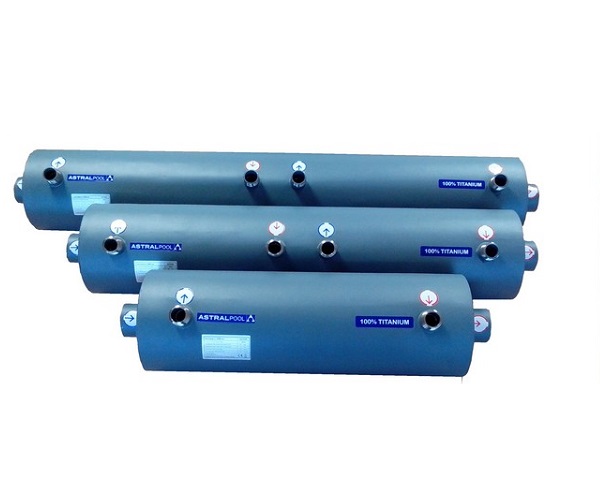
Table of contents of the page
En Ok Pool Reform We present a solution within the section Climatized pool To heat your pool water: tube heat exchanger.
Heated pools
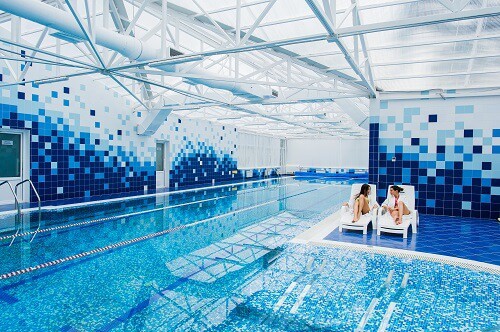
Evolution in acquiring devices to heat water: Heated Pool
Rising trend in pool construction: Devices to heat pool water
Nowadays, In many of the private homes and communities that are built today, extra elements are included in the pools to heat the pool and thus have the luxury of being able to heat the water.
Make the most of your pool with equipment to heat it
Additionally, with a Heated Pool you perceive the possibility of extending the season and bathing time with equipment with which you will obtain the benefit of heating pool water at home!
In fact, if you are interested in knowing all the details of heating a pool, click on the link: details to heat the water and you will access content such as: Concept of heating pool water, what is a heated pool, when is it considered to heat a pool, what type of pool can heat the water, benefits that heating a pool brings us, recommendations, etc.
Swimming pool heating with pool heat exchanger

What is a pool heat exchanger?
The pool heat exchanger is a method of heating the water in your pool.
The heating system used with the pool heat exchanger is gas, since it uses the gas that is burned to heat a heat exchange mechanism with the water.
Heat exchangers: suitable for small pools
Heat exchangers are ideal for small pools
In the same way, it should be noted that it is a type of heating suitable for small pools, or as an auxiliary heating system that has up to 150 m³.
When can pool heat exchangers be used?

Use of pool heat exchangers
Likewise, Heat Exchangers are used, for example, natural gas from the boiler, propane gas or fuel oil to heat the pool water.
A water circuit is established in which the pool water passes through the boiler, is heated, and subsequently returns to the pool.
Different types of pool heat exchanger
There are two main types of pool thermal heat exchangers:

1st type: Tubular heat exchangers
- In this case, heat transmission is achieved through the wall of the tube. (which we are going to discuss on this same page).
[amazon box= «B083ZCMVJ6″ button_text=»Buy» ]

2nd type: Plate heat exchangers
- Y, with this team The exchanger is made up of parallel and radial plates in which one of them is intended for the primary circuit and the other for the secondary circuit.
[amazon box=»B08BFDGQ61″ button_text=»Buy» ]
Next, link to the page dedicated to general lines of: which is a pool exchanger.(analysis of the different types, how they work, how to choose them...).
What is a tubular exchanger

Tubular heat exchanger description
Un exchanger of heat tubular, also known as exchanger shell and tube
What is a tubular heat exchanger: it is a piece of equipment designed to heat or cool a product through the thermal transmission generated when two fluids pass through different compartments.
Tubular heat exchanger: most used type
They are the most used type of heat exchangers in the industry. If the exchanger is manufactured, the process is longer compared to buying one already assembled.
Main uses of the heat exchanger
In general terms, main uses of heat exchangers are:
- Raise the temperature of a fluid, using a hotter one.
- Cool a fluid using another that is at a lower temperature.
- Condense gases.
Tubular Heat Exchanger Applications
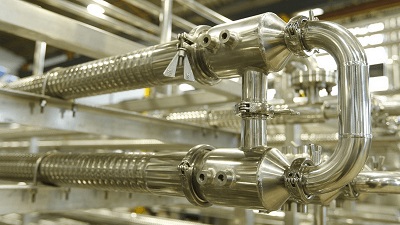
El heat exchanger It is a process equipment used in different industries, and its applications are very diverse and varied.
All the advantages of tubular heat exchangers They make them very robust, reliable and low-maintenance equipment, due to the absence of joints.
Within principales Applicability we highlight the following:
1st application of tubular heat exchangers: Sanitary Applications
- Firstly, there are those applications intended for the food industry, where special attention must be paid to the finishes, CIP cleaning and the drainability of the equipment.
2nd implementation of tubular heat exchangers: Pharmaceutical Applications
- They are those applications intended for the pharmaceutical and biotechnology industry, where roughness certification plays a primary role, and whose design is especially intended to avoid cross contamination.
3rd use of tubular heat exchangers: Industrial Applications:
- On the other hand, we have those applications intended for the chemical and petrochemical industry, where it is essential to guarantee a long useful life and high reliability of the equipment.
4th use of tubular heat exchangers: Evaporate liquids
Advantages of tubular heat exchangers
El tubular design in heat exchangers represents one of the most traditionally used configurations, due to its good performance and versatility. Next, we will mention the main notable advantages of tubular heat exchangers:
Among the main advantages of the exchangers are: high flow rate and low pressure losses, compact size, resistant to aggressive substances present in swimming pools (salt, fluorine, chlorine) as well as the most aggressive media or in high concentrations.
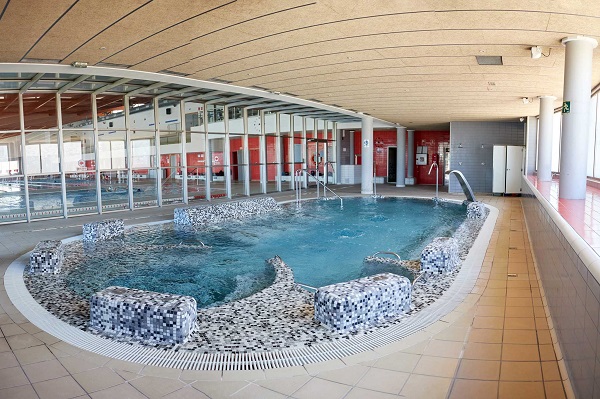
Benefits of tubular pool heat exchanger
- Low maintenance costs.
- High working pressures.
- High operating temperatures.
- Processing of fibers or particles.
- Great security in aseptic processes.
- Easy inspection and disassembly.
- Easy to expand.

1st advantage of tubular pool heat exchanger
Best heat transfer performance for pools and spas
- When it comes to data transfer solutions
- heat for your pool, the tubular heat exchanger offers nothing less than optimal performance.
- For this reason, there are tens of thousands of tubular heat exchangers operating efficiently and reliably around the world.
- Whether it be spas, hot tubs to Olympic size swimming pools, both commercial and domestic applications.
- Likewise, whether you use conventional heating or renewable energy, the unique design and technology of tubular heat exchangers will help you achieve faster heat-up times while reducing energy consumption, costs and emissions. CO2.
2st advantage of tubular pool heat exchanger
Easy to maintain
- Additionally, the easily removable tube bundles and end covers make cleaning and maintenance procedures very simple and easy.
3st advantage of tubular pool heat exchanger
Easy to Install
- On the other hand, the EC and FC ranges of heat exchangers are very popular and are equipped with solvent-welded connectors, allowing the unit to be installed directly by connecting to the pool pipes.
4st advantage of tubular pool heat exchanger
NEW universal end covers
5st advantage of tubular pool heat exchanger
Energy saving
tubular pool heat exchanger
- Obviously, the faster the pool reaches the required temperature, the lower the energy costs will be.
- Consequently, the units heat pools up to three times faster and the result is reduced energy costs, money savings and increased pool availability.
6st advantage of tubular pool heat exchanger
Renewable energy
7st advantage of tubular pool heat exchanger
TI heat exchangers are designed to work in very demanding conditions, especially in saltwater pools. Made of titanium, they are resistant to aggressive media as well as high pressures and high temperatures. Its construction allows it to be the ideal exchanger to work in installations where the flow rate is very high compared to the thermal exchange. Corrugated tubes intensify exchange and reduce fouling.

Exceptional reliability
- Likewise, they have a selection of titanium, stainless steel or cupronickel tube bundles, there is a heat exchanger that adapts to any type of pool water.
- Designed and manufactured to the highest quality standards, the units offer outstanding levels of reliability and operational life.
9st advantage of tubular pool heat exchanger
Shell and Tube Design
- The tube bundle is comprised of internal tubes and baffles that provide a larger, more effective surface area, allowing the unit to heat pools significantly faster than certain competitive products.
10st advantage of tubular pool heat exchanger
Titanium models
In addition to stainless steel and cupro-nickel options, all Bowman pool heat exchangers are available with titanium tube bundles that are suitable for any type of pool water treatment.
How a tubular heat exchanger works

Tubular heat exchanger operation
Composition of shell and tube heat exchangers
The shell and tube heat exchangers They are composed of cylindrical tubes, mounted within a cylindrical casing, with the axis of the tubes parallel to the axis of the casing. One fluid circulates inside the tubes, and the other circulates outside (shell-side fluid).
The tubular heat exchangers They consist of two independent pressure chambers: the casing and the tubular bundle.
Two media flow through these chambers in such a way that when there is a temperature difference between them, heat is exchanged without the media mixing.
Tubular heat exchanger calculation
Sizing of a tubular heat exchanger
To perform the sizing of a heat exchanger It is necessary to have certain starting data, such as the process flow, initial and final temperatureAs well as physical properties of the product.
An essential factor for calculation and sizing of a tubular heat exchanger is to be able to characterize the behavior of the product in a reliable and precise way.
, through laboratory tests, where the main properties of the product can be determined, such as:
- Density.
- Specific heat.
- Thermal conductivity.
- Viscosity.
Tubular heat exchanger calculation video
Sizing of a heat exchanger
Composition:
The shell and tube heat exchangers They are composed of cylindrical tubes, mounted within a cylindrical casing, with the axis of the tubes parallel to the axis of the casing. One fluid circulates inside the tubes, and the other circulates outside (shell-side fluid).
The tubular heat exchangers They consist of two independent pressure chambers: the casing and the tubular bundle.
Two media flow through these chambers in such a way that when there is a temperature difference between them, heat is exchanged without the media mixing.
Tubular heat exchanger parts

What are the basic components of shell and tube heat exchanger?
The basic components of a tubular heat exchanger are:
heat exchanger tubular bundle
What is a tube bundle?
- The tubular bundle is the set of tubes that provide the heat transfer surface between the fluid that circulates inside and the fluid that circulates through the casing. This set of tubes is where the product to be heated is located.
tubular plate
- The tubular plate is a metal plate that has been perforated or drilled, where the tubes that form the tubular heat exchanger are housed, which are fixed by expansion or welding. If extra protection against leaks is required, a double tubular plate can be used.
Housing and connections
- The casing is the envelope of the second fluid or secondary fluid. The casing is generally circular in section and is made of a steel plate formed into a cylindrical shape and longitudinally welded. The housing has connections for the inlet and outlet of the secondary fluid.
baffles
- The main purpose of the baffles is to control the general direction of casing side flow.
Manufacturing of a tubular heat exchanger
Fabricate a shell and tube exchanger
Types of tubular heat exchangers

Tubular heat exchanger models
Depending on its design, the nature of the product and the available space at the destination facility, the tubular heat exchanger can be grouped into 3 main groups:
The tube-in-tube heat exchanger
- First of all, there is this type also known as double tube heat exchanger, which is formed by two concentric tubes of different diameters, where the product circulates through the inner tube and the service does so through the space that exists between both tubes.
Annular Space Heat Exchanger
- On the other hand, there is another variety of exchanger that is made up of three or four concentric tubes. The product flows through the central annular space while the service flows through the outer and inner channels.
The multitubular heat exchanger
- Likewise, there is also a model that is made up of a tubular bundle inside a casing. The product flows through the inner tubes, while the service flows through the outer channel.
Heat exchanger for heating water in swimming pools and spas
- Finally, these models work by exchanging heat between a primary circuit and a secondary circuit. Titanium body (secondary pool water) and titanium coil (main boiler water). Alucoil outer cover and ABS plastic.
